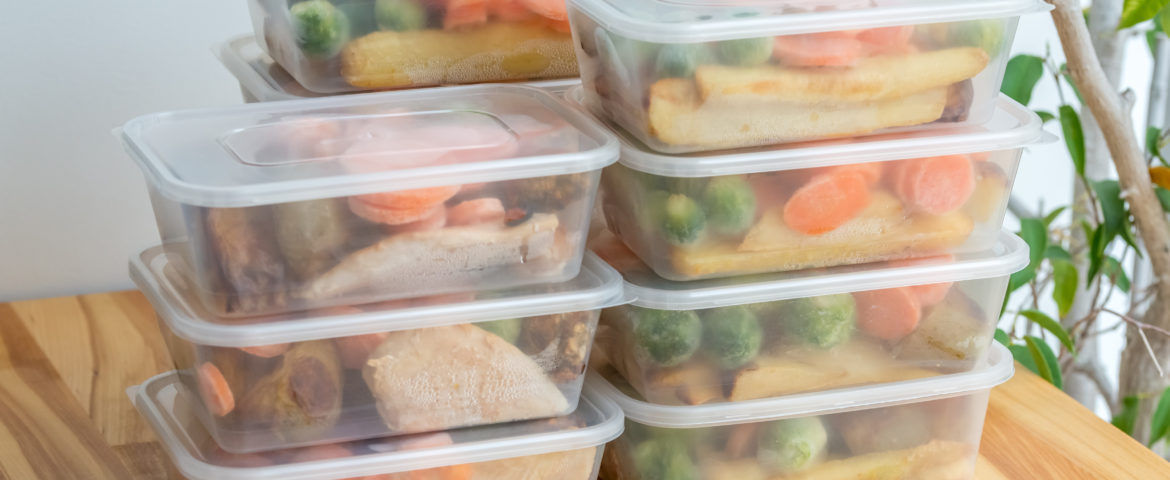By Rebecca Mason, RD
Did you know that March is National Nutrition Month? Spring is the perfect time to celebrate the importance of good food choices. One of the best ways to prioritize healthy eating (not to mention reduce food waste) is to take meal planning seriously.
Here are my top 9 tips to make meal planning actually work for you and your family.
- Your first stop: check the pantry and refrigerator. Always plan to use what you already have before it spoils or goes stale. Start thinking about recipes and meals you can make to use these ingredients, starting with fresh foods first. Have a bunch of spinach? Plan to use it in a salad or soup. Are your potatoes growing eyes and looking back at you? Plan to serve mashed potatoes or baked fries as a side with dinner. Use what you have and stop letting food go bad—which is just putting your hard-earned cash in the trash.
- Check for sales and specials at the store. Are canned beans 10 for $10, is pork loin on sale or are bell peppers just a dollar each? Plan meals using sale items when possible to save money on your grocery bill. You don’t have to be a professional coupon clipper to save some money on your groceries each week.

- Plan to make extras. I once heard the term “planover,” and I’ve used it ever since. It’s the simple concept that when you plan to make extra, you’ll cook once and eat twice that week. For example, make a batch of this Easy Crockpot Shredded Chicken. You can use it in chicken tacos on night one, then repurpose the leftover portions in chicken noodle soup, barbeque chicken sandwiches or chicken and broccoli Alfredo on night two. This is a wonderful way to save time, use cost-effective ingredients and really maximize quality time at the table with your family.
- Do not become a short-order cook. We all know a picky eater; a child, a sibling, perhaps even ourselves, and trying to cater to everyone’s wishes and desires derails your meal plan and eats up your time. Relieve the stress of planning a meal that everyone will enjoy and deconstruct them. Rather than pre-plating meals, allow everyone to build their own. The possibilities are endless: build your own taco bowl, create your own pasta, select your own stir fry. You’ll give children a sense of control, be able to model healthy eating and make mealtime more enjoyable for everyone.

- Write your weekly menu down. First, take schedules into consideration when planning your meals and opt for quick and easy on busy days and more complex dishes on your lighter days. And remember, it doesn’t have to be fancy or complex to be considered healthy. I like to write both the meals I want to serve and the groceries I will need on a single sheet of paper. This downloadable guide is divided up by sections of the store to make shopping more efficient. Having to back track and revisit sections of the store is frustrating, wastes time and often leads to increased spending at the store. This guide also makes it easy to track what you need to add to your cart if you use an online grocery delivery service.
- Shop during off hours. I’ll be honest, nothing instills a sense of annoyance in me like long lines at the grocery store. In order to dodge lines, crowded aisles and a crazy parking lot, I prefer to shop early on the weekends. This allows me time and space to look over produce, compare prices on goods and double-check my list leaving each section of the store. (If curbside pickup or an online grocery delivery service such as Shipt or Instacart is available in your area, these can also be a huge time saver when it comes to meal prep. These tools even allow you to save your shopping list so it’s easy to add items you purchase frequently.)

- Get ahead of the game. Invest a bit of your free time and set yourself up for success at mealtime. Numerous veggies can be washed, dried and chopped ahead of time and kept in airtight containers in the fridge for about a week—like broccoli, onions, bell peppers, celery, cabbage, carrots, butternut squash and cauliflower. Fruits and veggies with high water content (like tomatoes and cucumber) don’t last quite as long when they have been prepped; use these within about 3 days to ensure fresh and tasty produce!
- Get inspired. Nothing gets you excited for meal prep like trying out a new recipe that looks delicious. Changing up your recipes keeps mealtime interesting and gets you using seasonal foods. Follow healthy food websites, blogs and even social media channels for some ongoing inspiration. Some of my favorites are Eating Well, CookingLight and Food & Nutrition.

- Include the kids. Kids love to get involved and allowing them to be your sous chef can double as special bonding time. It can also speed up meal prep. Getting the kids involved can be as easy as having them set the table or washing vegetables for a dinner salad. Any little thing that helps get dinner on the table faster is a win.
Priority Health members also have access to the Wellbeing Hub, with information and tools tailored to their specific health and wellbeing needs including the latest and greatest healthy recipes.
With a little practice, meal planning can be a great tool to make dinnertime more enjoyable for the family and ultimately save money and time. This nutrition month, aim to prep a couple of meals per week to go further with food and take back time to spend with those you love.
About the Author: Rebecca Mason, RD, is a registered dietitian. She is passionate about helping families and individuals improve their health through nutrition education and nutritious food access. Rebecca is certified in adult weight management, and has a background in both clinical nutrition and wellness programming.


